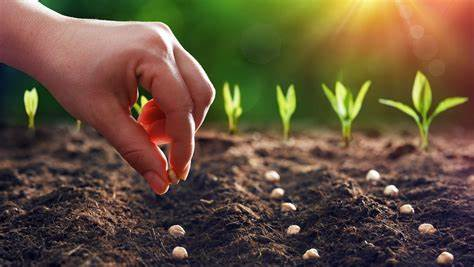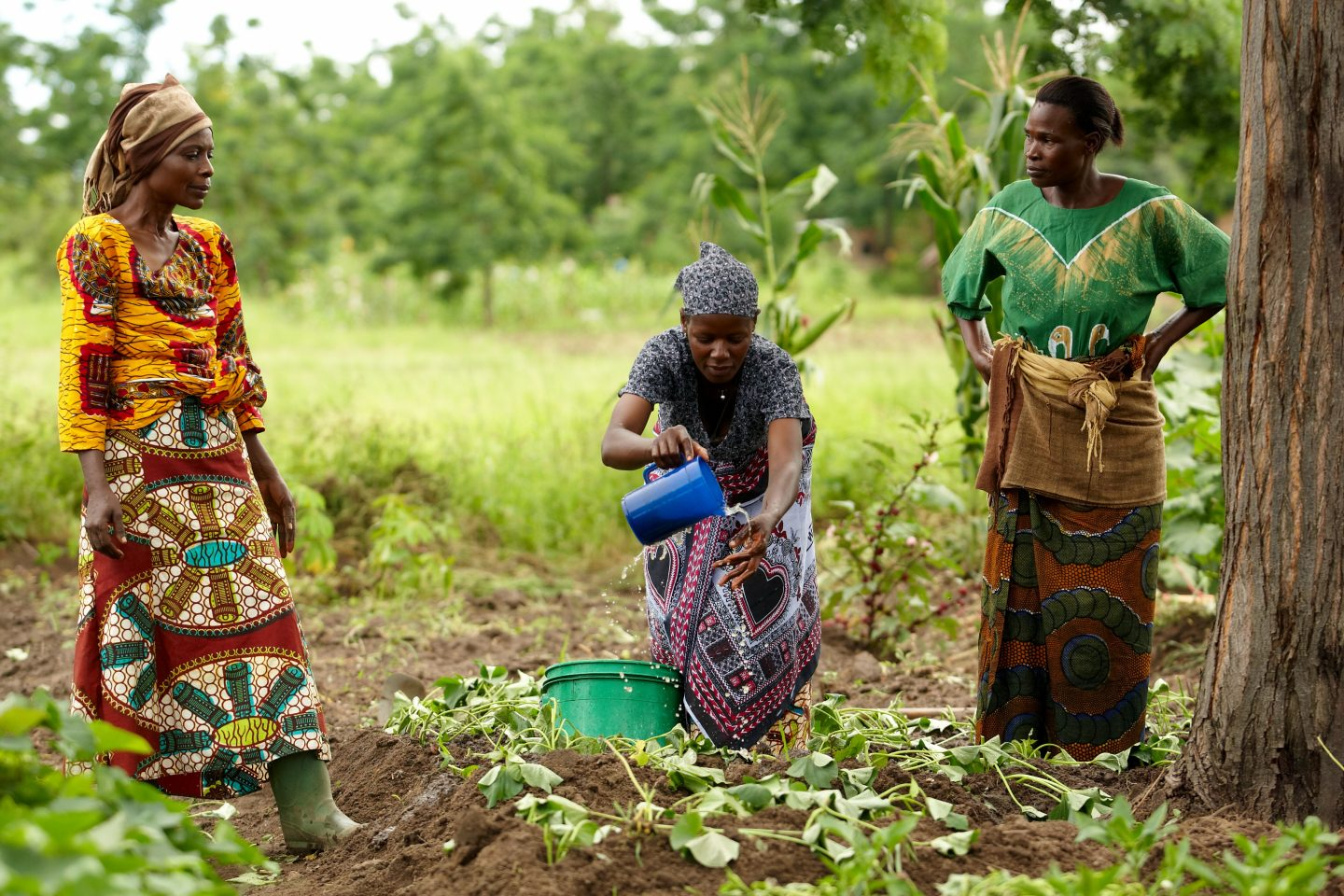Gardien de semences, reproduction, adaptation
Lien vers le site:
- Produisez vos propres semences (part. 1) - YouTube
- abc la classification botanique - YouTube
- PRODUIRE SES PROPRES SEMENCES / Introduction - YouTube
Link to website:
- Organic Seed Commons. A community of seed people. Sowing ideas, growing what's good: Organic Seed Commons
- Engagement of the organic value chain to support Organic Breeding in Europe: Engagement.Biobreeding - Communication
- https://youtu.be/yrHrEz-lq7A
Enlace al sitio web:
- Guardianes de semillas ancestrales - TvAgro por Juan Gonzalo Angel Restrepo - YouTube
- COMO REPRODUCIR CUALQUIER PLANTA // ESQUEJES 🌱🌱🌱 - YouTube
Les gardiens de semences jouent un rôle crucial dans la préservation de la diversité génétique des cultures agricoles, ce qui est essentiel pour la sécurité alimentaire future et l'adaptation aux changements climatiques, car différentes variétés de plantes peuvent avoir des caractéristiques adaptatives uniques.

Un gardien de semences, parfois appelé conservateur de semences, est une personne, une organisation ou un programme dédié à la préservation et à la conservation des variétés de semences végétales, en particulier des variétés traditionnelles et indigènes. Le rôle du gardien de semences est crucial pour la préservation de la diversité génétique des cultures agricoles, car il contribue à éviter la perte de variétés de plantes précieuses.
L'une des organisations les plus connues qui agissent en tant que gardiens de semences est le "Svalbard Global Seed Vault" en Norvège, qui stocke une grande variété de semences du monde entier dans une chambre forte souterraine pour servir de réserve en cas de catastrophes naturelles, de conflits ou de perturbations majeures dans l'approvisionnement en semences.
Les gardiens de semences jouent un rôle crucial dans la préservation de la diversité génétique des cultures agricoles, ce qui est essentiel pour la sécurité alimentaire future et l'adaptation aux changements climatiques, car différentes variétés de plantes peuvent avoir des caractéristiques adaptatives uniques.

A l’échelle mondiale, une part de plus en plus importante des semences est produite par quelques grands groupes agricoles. En Europe et en Amérique du Nord, il n’y a plus que quelques paysannes et paysans qui produisent leurs propres semences. En conséquence, la diversité des variétés traditionnelles et paysannes se perd de plus en plus. De même, dans de nombreux pays d’Afrique, d’Asie et d’Amérique latine, le nombre de semences paysannes se réduit progressivement.
En revanche, les variétés hybrides et, en partie, les variétés génétiquement modifiées, gagnent du terrain. Souvent, elles représentent le mauvais choix pour les familles de petits paysans, car elles n’atteignent les rendements élevés promis qu’avec l’utilisation d’engrais chimiques et des pesticides très coûteux. De mauvaises réglementations sur les semences contribuent à ce développement: dans de nombreux pays, il est interdit de vendre ou d’échanger des semences paysannes.

SWISSAID promeut la diversité des semences depuis plus de 20 ans, comme ici, grâce à une banque de semences au Nicaragua. En Colombie et au Nicaragua, le projet «Semillas de Identidad», un réseau de banques de semences, a été développé avec des partenaires. Depuis, 500 variétés de semences ont été créées dans les deux pays. Et quelque 12’000 familles y participent! SWISSAID est en train d’en créer au Niger, au Tchad et en Tanzanie, afin de permettre également aux paysans et paysannes de protéger leurs semences et de les conserver.
Lien vers le site:
Our solution: a decentralized seed reproduction and adaptation platform
Create a non-profit 100% biological seed collection, reproduction and adaptation dynamics, in a passionated citizen collaborative way. The goal is to serve the planet, and help landowners and territories in the protection of their biodiversity, greening and reforestation projects.
(this is coherent with the Cop 15 programmes :
The COP 15 Programmes:
https://www.cbd.int/programmes/ )
Whatever happens to seed affects the web of life.
Vandana Shiva
- A decentralized and global network of people,
- collecting, reproducing, adapting rare, rustic and biological seeds
- Expertise on re-greening, regeneration and reforesting sterile / dry land
- Expertise on adapting to climate change and disasters of biotopes
- Working inside community and connected globally
- Being prepared for the effects of climate change in our food resources and land by adapting the seeds and preparing the land to resists those changes come with rising the earth temperature
- Done locally, run globally
- online platform for plug-in people with their land and farms
- Evolutive nomenclatura of the seeds (type of soil and climate) for better adaptation
- Online and presential kits for education & training
- Advisory to governments which want to green and regenerate and diversify whole areas
- Actualized and adapted seed banks globally in local form
- Seed reproduction/ adaptation inside the community
- Educating the sustainable ways of growing food
- recovering Biodiversity by giving rustic seeds inside the community like seed libraries, that people can participate to grow plants for their need and recycling and actualizing the seeds every farming seasons
Creating a decentralized, collaborative platform for rare and biological seeds to support the goals of the Convention on Biological Diversity (CBD) and COP 15 on biodiversity would require careful planning, coordination, and the involvement of various stakeholders.
Here are some steps and considerations that would need to be taken into account:
- Stakeholder Engagement and Collaboration: Engage with governments, research institutions, non-governmental organizations (NGOs), local communities, and seed banks to form a collaborative network. Collaborators should include experts in biodiversity, seed preservation, genetics, legal frameworks, and technology development.
- Technology Infrastructure: Develop a secure and decentralized technology platform, possibly utilizing blockchain or other distributed ledger technologies. This platform would provide transparency, traceability, and data integrity for seed transactions and information sharing.
- Data Management: Create a standardized database for rare and biological seeds, including genetic information, geographic origins, traits, and historical significance. Implement data management protocols to ensure accuracy, security, and accessibility.
- Legal and Ethical Frameworks: Address legal and ethical considerations related to seed collection, ownership, sharing, and benefit-sharing with local communities and countries of origin. Ensure compliance with international agreements and local regulations.
- Biodiversity Conservation: Design the platform to prioritize biodiversity conservation by focusing on rare and endangered plant species. Include mechanisms to monitor and assess the impact of seed exchanges on biodiversity conservation efforts.
- Capacity Building: Provide training and capacity-building programs for users of the platform, including local communities, farmers, and researchers. Promote sustainable seed management practices and knowledge sharing.
- Financial Sustainability: Develop a sustainable funding model to support the platform's operation, maintenance, and expansion. This could involve public and private sector partnerships, grants, donations, and user fees.
- User-Friendly Interface: Design an intuitive and user-friendly interface for the platform to facilitate easy navigation, seed searching, sharing, and collaboration.
- Participatory Approach: Involve local communities and indigenous peoples in the decision-making process regarding seed collection, use, and exchange. Respect traditional knowledge and practices related to seed conservation.
- Awareness and Advocacy: Raise awareness about the platform's goals and benefits among policymakers, researchers, farmers, and the general public. Advocate for the importance of biodiversity conservation and the role of seeds in achieving global sustainability goals.
- Monitoring and Reporting: Implement mechanisms to monitor the platform's impact on biodiversity conservation and achievement of COP 15 goals. Regularly report progress and outcomes to stakeholders and international bodies.
Creating such a platform is a complex and ambitious endeavor that requires a multi-disciplinary approach, strong leadership, and long-term commitment. It would also need to adapt to evolving technologies, policies, and global conservation priorities. Collaborating with experts, organizations, and governments can help ensure the success and effectiveness of the platform in meeting the goals of COP 15 and biodiversity conservation.
Intake in our platform :
- who is IN :
- passionate about seeds and saving biodiversity
- private or small farmer
- land owner
- Regeneration Island leadership
- willing to contribute
- sense of the sacred “Mother Earth”
2. who is OUT :
- GMO
- Seed Industry
- Mobilize awareness and collaboration, of a maximum of people and players around reproducing and adapting rare seeds;
- Reconnection of people with nature, biodiversity, with “Mother Earth”, with their “self” through a manual activity in relation with earth;
- Regaining trust and self confidence by personally participating in a concrete “abundance” project;
- Massively multiplying the amount of bio rustic seed banks, though crowd-sourcing and peer-to-peer - at relatively low cost, but with value for the participants;
- To be in the group, and participate actively, of those who prevent the global biodiversity collapse and ensure the fertility of the future.
Risk analysis to manage possible unsuitable seeds
1- Is there a precise description of the regeneration island which describes the mode of seed storage and does it include the possible points of contribution of unsuitable seeds including genetically modified seeds?
2- Is there an up-to-date organizational chart of all people working in the regeneration island, and does it identify who is responsible for unsuitable seeds and a back-up plan to compensate for absences?
3- Is there an annual training of all staff members involved in the seed banking process on the detection and management of unsuitable seeds?
4- Is a labeling and traceability system integrated in regeneration island that allows instant identification of where each of the seeds came from and where they were delivered?
5- Is there a segregation system described in the regeneration island that ensures at any moment that seed described as unsuitable is segregated from unsuitable seed?
6- In order to detect unsuitable seed, are the basic properties of suitable seed requirements for storage and reproduction defined and documented? Are seed acceptors aware of this document?
Suitable seed description
Suitable seed is a seed that can be used easily for reproduction by those who make natural organic agricultural production.
1- Non genetically modified
2- Preferably seeds of open-pollinated plants
3- Preferably not hybrid seeds which are manually produced by cross-pollination
4- Preferably heirloom seed
5- Seeds that are not contaminated with pesticides (Contamination with organic pesticides is acceptable in special circumstances)
Unique added values of this project